

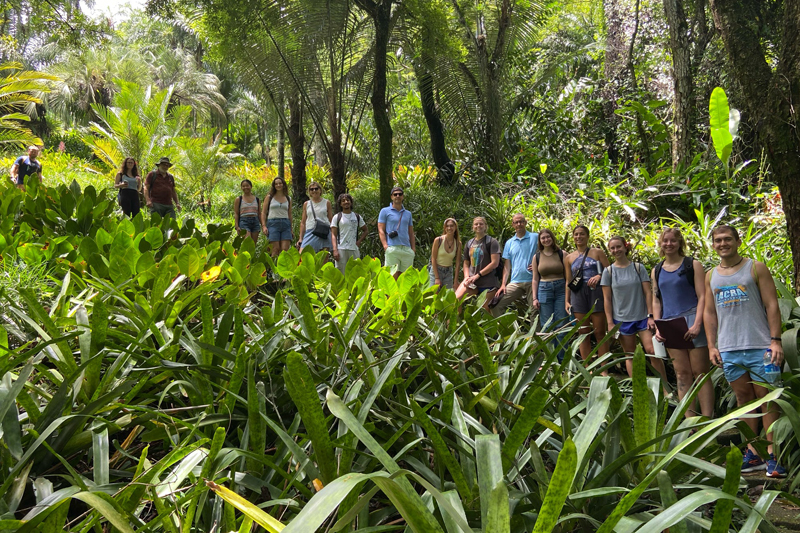
Exploring Brazil’s plants and landscapes
Photos courtesy of Addison Garrett, Zach Hammaker, Sidney vanNeerden and Jennifer Werth February 22, 2024
UD students study plant science, landscape architecture through Brazil study abroad program
An adventure aboard a floating lodge in early January immersed in the nature and culture of the Amazon River set the bar pretty high for University of Delaware students studying abroad that month in Brazil.
“That was so surreal to experience,” said Maci Carter, a senior agriculture and natural resources and plant science double major.
For part of the first week of the 25-day Winter Session UD study abroad program, 15 Blue Hens — 13 students and two professors — lived in the Uakari Lodge where they were guided down an Amazon reserve. With no cell service, they got to unplug and get to know each of their peers. They canoed out with guides who pointed out flora and fauna and dove into the culture of the Amazon Rainforest. They searched for Brazil’s birds and other wildlife while on hikes.
They even watched the sunset from their canoes, sharing snacks with each other, one of the highlights of the whole study abroad experience for Carter.
“It was one of those types of moments you’re never going to experience again,” Carter said. “The sunset was beautiful. It was clear at night and we could see all the colors.”
Between the exploration on the Amazon and over the 25-day period, students soaked in knowledge about Brazil through UD courses Plants and Human Culture (PLSC 100) and Representation 1: Landscape Drawing (LARC 103), the former taught by landscape horticulture professor Susan Barton and the latter taught by landscape architecture instructor Zach Hammaker, both from UD’s Department of Plant and Soil Sciences in the College of Agriculture and Natural Resources. Students returned to UD with a renewed appreciation of nature as well as newfound skills in sketching and portraying landscapes.
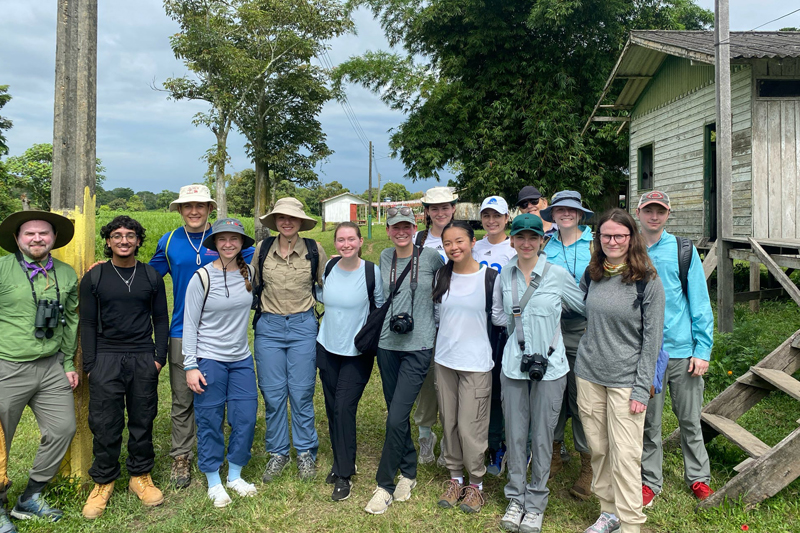
Studying plants and sketching landscapes
Both courses taught during the study abroad are also taught in Newark. But, every other Winter Session when UD offers these Brazil courses, students clamor for the immersion opportunity into South American nature and architecture.
In Plants and Human Culture, students learned about the relationships between plants and humans as well as plants’ role in ecosystems. They touched on issues like invasive species and water management. In Landscape Drawing, they learned sketching techniques to help portray landscape subjects.
“Both classes are really about developing observational skills,” said Barton, who has led the study abroad program since its launch in 2008. “In order to draw well, you have to observe well. And Plants and Human Culture is about observing your surroundings.”
Over the course of the winter program, students pored over various readings on plants. They wrote reflective journal entries and took quizzes. They also had to complete a series of sketching assignments while visiting numerous sites in Brazil, including the Amazon as well as Rio de Janeiro’s numerous architectural sites, museums and gardens.
Students studied the work of Brazilian landscape architect Roberto Burle Marx, who Barton also covers while teaching her Plants and Human Culture course in Newark. Marx, who lived from 1909 to 1994, is famous for the way he designed parks and gardens. The students even saw his art in person at the Sítio Roberto Burle Marx, where Marx lived and worked.
“Marx was a renaissance man,” Barton said. “He cooked. He made jewelry. He was a great musician. He was a great artist. And he was a plant person. He did all of those things. And he was a collector so there’s all kinds of collections of things at his house. He collected glass, he collected shells. So you get to see all of that plus the amazing gardens around him. It’s one of the most spectacular places we go.”
Learning about him in a classroom is one thing. But seeing his work was a whole eye-opening experience and a favorite moment for these Blue Hens.
“It kind of felt like we were back in the Amazon while visiting his home,” Carter said.
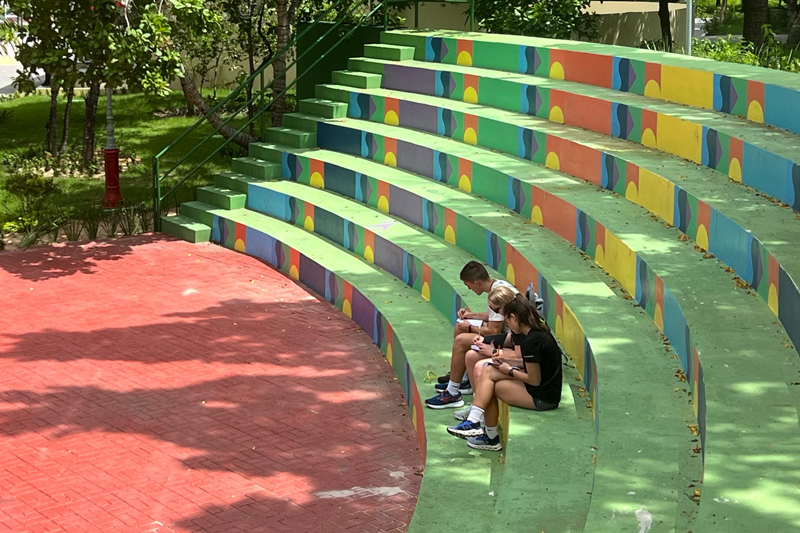
Landscape architecture was new to many of the students, including Carter. There were no landscape architecture majors among this year’s study abroad cohort.
Hammaker, who taught Landscape Drawing and co-led the study abroad program with Barton, was impressed by how quickly all of the students picked up the skills to promote perspective through sketching landscapes.
“Communication that's visual is absorbed quickly and much more effectively by the mind,” Hammaker said. “I think it's a great skill for the students to have in their arsenal to support written and verbal communication styles.”
Students typically had between 20 and 30 minutes to do their sketching exercises.
For one of the sketching assignments, students were paired up and had to draw each other. At the end of the assignment, all of the sketches were put side by side and the students had to guess who was drawn in each sketch. The exercise in sketching people can be nerve-racking, Hammaker said, because no one wants to offend anyone with their drawing. But each sketch was drawn with care.
“That’s one of the things I see, by the end of this class,” Hammaker said. “All the students are being very specific about the things they are sketching whether they’re objects or elements or scenes. They are proportionate and they feel real and of the place because the students are using keen observational skills in their drawings.”
For their final projects, students had to form groups for Plants and Human Culture to present on the relationship between plants and humans in Brazil. For Landscape Drawing, each student had to sketch five objects or scenes from Brazil and work to connect them in one scene on a poster.
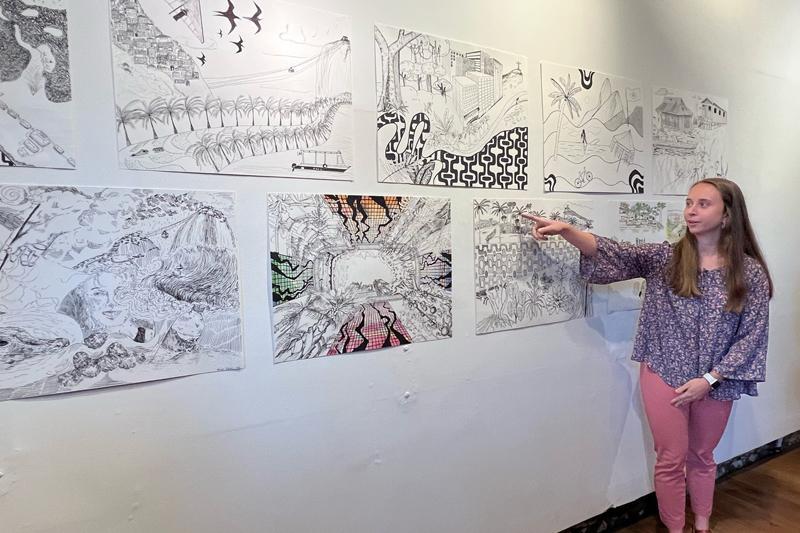
Even Hammaker and Barton participated in creating these montages. Barton has two of her own montages from previous Brazil study abroad sessions framed in her office. Hammaker said the students’ montages showed just how immersed they were in Brazil.
“I was quite moved many times over by what the students were saying about their experiences,” Hammaker said. “There were stories of their lived experiences and life lessons learned, whether it was us losing our luggage, or seeing the Amazon River out of the plane window. We had some students who really took it a lot more abstractly.”
Lessons and reflections
The montages and journals are two of the most significant souvenirs students brought home with them. And the students said they’ll cherish the ability to sketch detailed landscapes and disconnect from technology while doing so.
Mary Quackenbush, a senior sport management major with a minor in professional selling and sales management, said ever since returning home from Brazil, she has found herself putting down her phone more and sketching her surroundings during her free time.
“You don’t really see anybody going to a park and drawing or going to a museum and drawing,” Quackenbush said. “People are just kind of on their phones. I sit on my phone all day and don’t really think about connecting with nature. Both of these classes were a way for me to tap into that side.”
Quackenbush even tapped into another side of herself taking courses outside of her field of study. She said the College of Agriculture and Natural Resources has always interested her, and going to Brazil gave her some exposure to it.
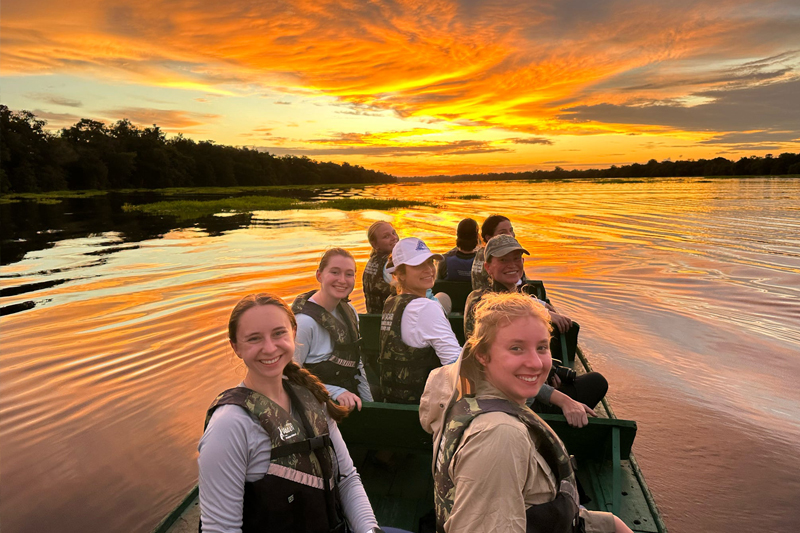
“Taking these classes was something I thought could make me a really well-rounded person,” Quackenbush said. “Learning about agricultural design was something interesting to me. I’ve been wanting to tap into an artistic side of me which I didn’t think I had but was interested to see what was there.”
Emma Carey, a senior plant science major with a minor in landscape horticulture and environmental soil sciences, was stunned by how big many of Brazil’s plants and trees grew. She was taken aback by the natural beauty of Brazil, the Amazon River and the jungle.
“Something I remember so vividly is every time we took a plane anywhere, it was just opening the window and getting to see vast jungle and knowing that we only saw such a small part of it,” Carey said. “It blew my mind. It was so gorgeous.”
Independence was among the skills Carey gained over the course of the winter session.
“Navigating a new city, especially one where I don't speak the language, gave me a lot of confidence with being able to just navigate the world in general,” Carey said. “It also taught me patience and going with the flow.”
Addison Garrett, a sophomore mechanical engineering major, took away the skills to step back and observe his surroundings and immerse himself in nature. He praised study abroad and highly recommended it to anyone considering it.
“You meet great people,” Garrett said. “No matter what major or profession you want to go into, getting such a worldly experience like that, enginging in a different culture, learning how to be more open-minded and getting over differences, that’s what makes you just a more worldly person and it will make you more successful in building relationships which can lead many different places.”
Barton is retiring at the end of this school year and will pass the torch to lead the Brazil program to Hammaker and her faculty colleagues.
Over the years, Barton made numerous connections with local landscape designers and other residents. She has hiked Sugarloaf Mountain, a steep hike with iconic views of Rio. She has biked up Corcovado, where the 98-feet tall Christ the Redeemer, one of the seven wonders of the modern world, is located.
But of all the memories she has over the years, taking the students to see the Roberto Burle Marx Sítio, seeing their reactions, and picking up sketching skills herself are some of the most special.
“I’ve learned from my students,” Barton said. “Every time I’ve gone to Brazil, students point out things I didn’t know. We learn from each other.”
Contact Us
Have a UDaily story idea?
Contact us at ocm@udel.edu
Members of the press
Contact us at 302-831-NEWS or visit the Media Relations website

